Over the last decade, the workplace has fundamentally transformed into a sophisticated hybrid ecosystem that prioritizes flexibility, well-being, and purposeful collaboration. Successful organizations are designing intentional spaces that blend physical and digital experiences to maximize both productivity and connection. Top talent now expects intelligent and collaborative workspace design that adapts to their needs, supports diverse work styles, and creates meaningful opportunities for collaboration. The most impactful workspaces utilize dynamic, technology-integrated environments that serve as catalysts for successful work rather than mandatory attendance spaces.
- Modern collaborative workspaces blend physical and digital elements to support seamless teamwork across any location
- Four primary workspace types serve different needs including shared offices, collaboration areas, co-working spaces, and virtual environments
- Physical essentials include flexible zones, interactive whiteboards, ergonomic furniture, and acoustic solutions for comfort and productivity
- Digital tools are critical with video conferencing, digital whiteboarding, project management, and real-time messaging apps
- Benefits include enhanced communication, optimized space use, improved satisfaction, and greater agility
- Success requires intentional integration of physical design with digital tools, plus continuous feedback and refinement
What Is a Collaborative Workspace?
A modern collaborative workspace is a flexible, technology-driven environment designed to make teamwork easy and effective, no matter where people are located or how they work. These spaces use smart design and integrated digital tools to connect team members regardless of location, encourage real-time remote collaboration, and adapt to changing team needs, all while supporting a culture of innovation and inclusion.
What truly sets today’s collaborative workspaces apart is their ability to unify both physical and digital experiences seamlessly. AI-powered tools, interactive technology, smart building systems, and intuitive platforms eliminate barriers between team members, ensuring everyone can contribute equally. These environments are also highly adaptive, ensuring that everyone has a space enabling them to operate however they work best. The result is a collaborative workspace that not only supports productivity but also cultivates a dynamic, inclusive culture where innovation thrives.
These spaces operate on two levels: physical and operational. The collaborative workspace provides private, quiet spaces for focused work as well as social spaces for team collaboration, socializing, and more.
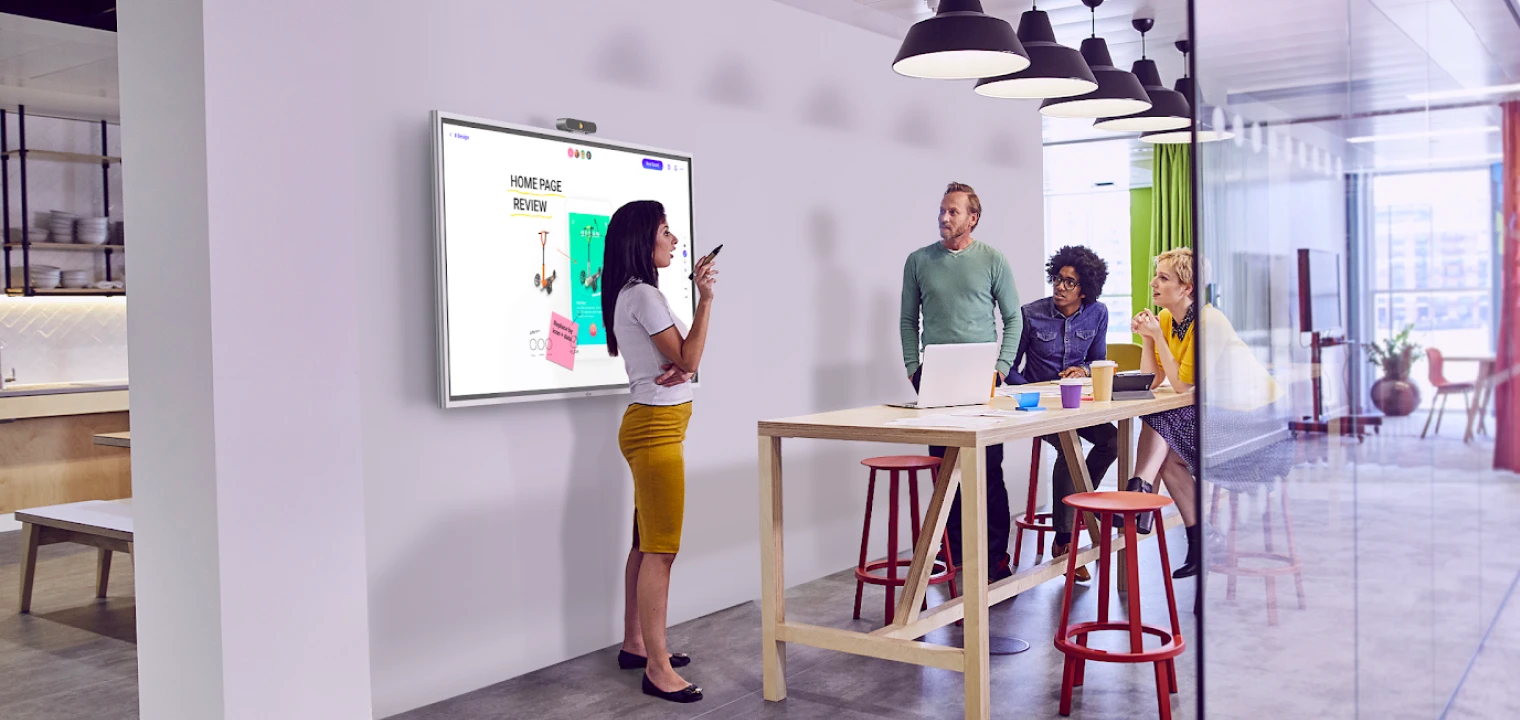 Conversations in shared work spaces
Conversations in shared work spaces4 Common Types of Modern Collaborative Workspaces
Creating an effective collaborative workspace today means choosing the right type of environment to match your team’s needs and work style. Here are the four primary types of workspaces shaping the modern approaches:
-
Shared Office Spaces
Shared office spaces bring together employees from different departments—or even different companies—under one roof. These environments are designed to maximize resource sharing, offering access to common amenities like meeting rooms, kitchen areas, and lounge spaces. Shared offices foster healthy team dynamics and can spark new ideas by encouraging spontaneous conversations among diverse groups.
Key Features:
-
Common areas for informal meetings
-
Shared amenities (cafeterias, lounges, printers)
-
Opportunities for networking and cross-functional collaboration
-
Collaboration Areas
Many organizations are transforming traditional office layouts by carving out dedicated collaboration zones. These are specialized areas set aside within a larger office for teamwork, brainstorming, and group projects. They might include open lounges, huddle rooms, or tech-enabled meeting pods, all designed to support both planned and impromptu collaboration without disrupting quieter workspaces.
Key Features:
-
Designated teamwork zones within a conventional office
-
Flexible furniture for easy reconfiguration
-
Integrated technology for seamless sharing and communication
-
Co-working Spaces
Co-working spaces are typically used by freelancers, remote workers, or small startup teams who need access to professional facilities without the commitment or cost of a private office. These environments offer fully equipped workstations, meeting rooms, and community events, making them ideal for individuals and small groups seeking flexibility and networking opportunities.
Key Features:
-
Flexible memberships and on-demand access
-
Professional amenities (Wi-Fi, printers, meeting rooms)
-
Community events and opportunities for collaboration
-
Virtual Spaces
With the rise of remote and hybrid work, virtual collaborative spaces have become essential. These are digital environments—such as online project management platforms, shared digital whiteboards, and video conferencing tools—that allow teams to coordinate, communicate, and collaborate from anywhere in virtual meetings. Virtual workspaces are location-agnostic, making teamwork possible across time zones and geographies.
Key Features:
-
Cloud-based collaboration tools (chat, file sharing, project tracking)
-
Virtual meeting rooms and whiteboards
-
Real-time communication and document editing
Related: How the Right Workspace Can Spark Creativity
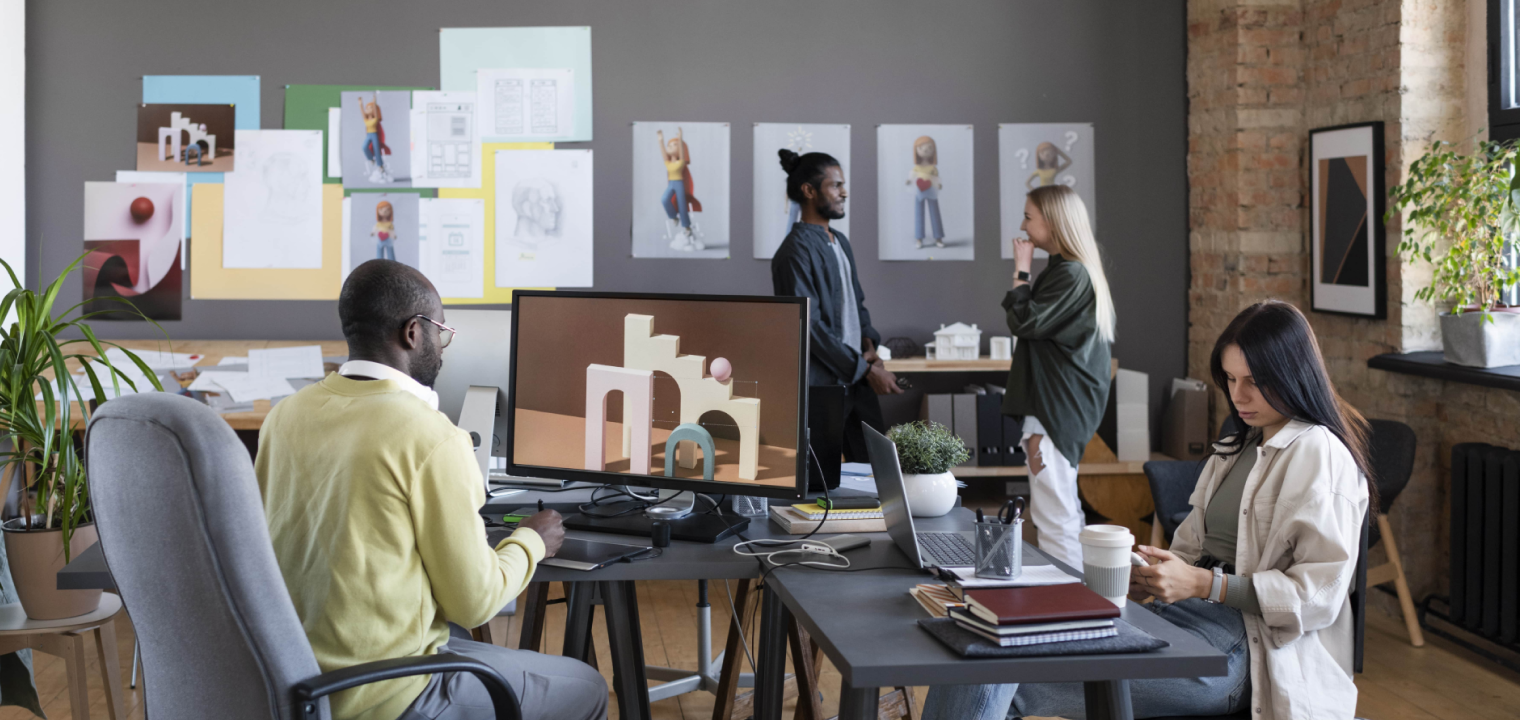
The Benefits of Creating Collaborative Workspaces
Implementing collaborative workspaces brings a wide range of advantages that go beyond updating office layouts to be more modern—they change and enhance how teams connect, innovate, and perform on a day-to-day basis.
Increased Productivity and Innovation
Collaborative workspaces are designed to foster open communication and spontaneous idea-sharing, which significantly boosts team productivity and creativity. By breaking down physical and organizational barriers, these environments make it easier for employees to brainstorm, solve problems together, and generate innovative solutions that might not emerge in isolated settings.
Enhanced Communication and Engagement
Open, flexible spaces encourage frequent interactions, leading to improved communication and stronger relationships among team members. This heightened engagement not only streamlines decision-making but also creates a sense of unity and shared purpose, which is essential for a vibrant and positive collaborative workplace culture.
Optimized Space Utilization and Cost Savings
Modern collaborative workspaces make more efficient use of office space by replacing underutilized areas with multi-purpose zones that adapt to various needs. This flexibility reduces costs by maximizing every square foot and often allows organizations to downsize or share resources, resulting in substantial cost savings.
Improved Employee Well-Being and Satisfaction
By offering a variety of work settings (from quiet zones for focused tasks to social areas for informal collaboration), collaborative workspaces give employees more autonomy and comfort. This flexibility supports better work-life balance, reduces stress, and increases overall job satisfaction, which can lead to higher retention rates and attract top talent.
Greater Agility and Adaptability
Collaborative environments are inherently agile, making it easier for organizations to respond to change. Whether it’s accommodating hybrid work schedules, scaling cross-functional teams up or down, or quickly reconfiguring spaces for new projects, these collaborative workspaces support rapid adaptation and continuous improvement.
Sustainability and Community
Sharing resources and designing spaces for multiple uses not only lowers operational costs but also supports sustainability goals. Collaborative workspaces often promote environmentally friendly practices and foster a sense of community by bringing together diverse teams and encouraging knowledge sharing across the organization.

How to Design a Collaborative Workspace
Building a collaborative workspace means designing an environment where people can easily connect, share ideas, and work together—whether they’re in person or remote. This requires combining thoughtful physical elements with the right digital tools. Are you ready to make the shift?
Physical Essentials for Collaboration
A well-designed physical environment is the foundation for effective teamwork in a collaborative workspace. The right layout and furnishings can encourage spontaneous collaboration, support focused work, and ensure everyone feels comfortable and engaged. By thoughtfully selecting and arranging these elements, organizations set the stage for creativity, productivity, and connection.
Flexible Meeting Zones
Flexible meeting zones are adaptable areas designed to support a wide range of group activities, from team meetings and brainstorming sessions to solo focus work. By allowing teams to quickly reconfigure the space, these zones encourage spontaneous discussions, group problem-solving, and both formal and informal collaboration. The versatility of these areas ensures that the smart workspace can evolve with the needs of the team throughout the day.
-
Modular tables and stackable chairs for easy reconfiguration
-
Movable partitions or whiteboard walls to create breakout spaces
-
Lounge seating clusters for informal gatherings
Interactive Whiteboards
Interactive whiteboards are smart boards for conference rooms that enable real-time idea sharing, sketching, and collaboration among both in-person and remote participants. They make brainstorming and visual thinking accessible to everyone, allowing teams to save, share, and revisit ideas with ease. These tools are key aspects of collaborative workspaces and bridge the distance gap between office and remote workers, ensuring that everyone can participate fully in collaborative workplace sessions.
-
Smart Whiteboards
-
Camera and Microphone
-
Digital Stylus
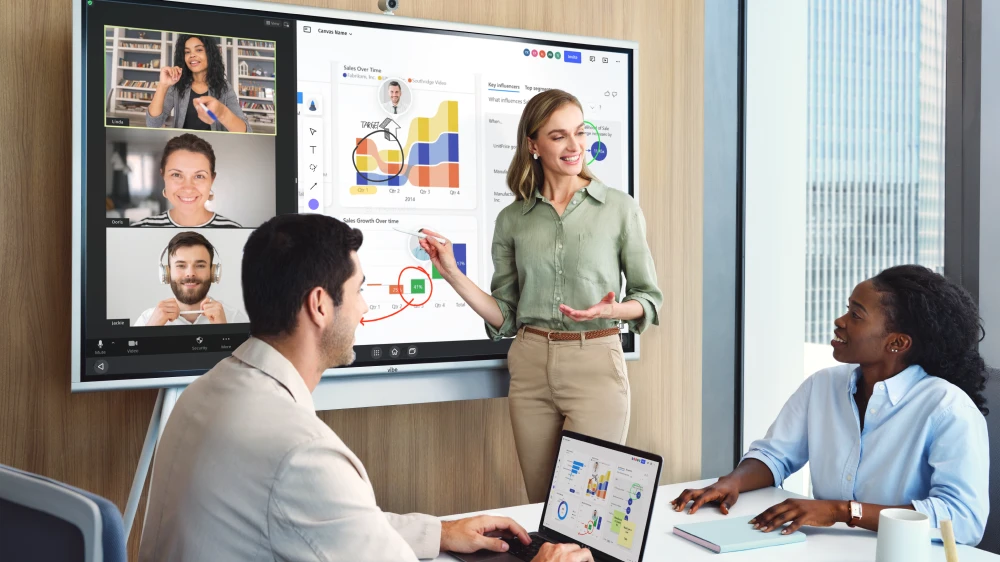 The Vibe Board supports real-time input and visual collaboration.
The Vibe Board supports real-time input and visual collaboration.Ergonomic Workstations
Ergonomic workstations feature furniture and accessories designed to support healthy posture, comfort, and sustained productivity. By reducing physical strain and allowing individuals to personalize their setup, these workstations help employees stay comfortable and focused throughout the day. Supporting well-being in this way fosters engagement, creativity, and long-term satisfaction.
-
Adjustable chairs with lumbar support
-
Sit-stand desks
-
Monitor arms and keyboard trays
Acoustic Solutions
Acoustic solutions are design features and furnishings that minimize noise and distractions, creating a balanced environment for both collaboration and concentration. By reducing background noise in open-plan areas and providing quiet zones for deep work or confidential conversations, these elements support a variety of work styles within the same space. Effective acoustic design helps everyone stay focused and productive, even in busy or high-traffic collaborative workspace environments.
-
Sound-absorbing wall panels or ceiling tiles
-
Quiet pods or phone booths for private calls
-
Carpeting or soft furnishings to dampen ambient noise
Software Essentials for Collaboration
Digital tools are the backbone of collaboration in hybrid and distributed work environments. The right software solutions enable real-time communication, streamline project management, and make it easy for teams to collaborate visually and stay organized, regardless of location. Integrating these tools ensures that collaboration flows smoothly and everyone has access to the resources they need.
Video Conferencing Software
Video conferencing software connects distributed teams, making face-to-face communication possible no matter where people are located. These platforms support hybrid meetings, enable virtual brainstorming, and ensure that remote participants are fully included in discussions and decision-making.
-
Zoom
-
Microsoft Teams
-
Google Meet
Digital Whiteboarding Tools
Digital whiteboarding tools allow teams to ideate, sketch, and organize thoughts collaboratively in real time. These cloud-based platforms make it easy to share visual ideas, capture feedback, and revisit brainstorming sessions, whether participants are in the office or remote making one shared collaborative workspace.
-
Miro
-
Microsoft Whiteboard
Project Management Platforms
Project management platforms help teams coordinate tasks, assign responsibilities, and track progress in a centralized space. These tools streamline workflows, improve accountability, and make it easy for everyone to stay on top of deadlines and deliverables.
-
Asana
-
Trello
Real-Time Communication Apps
Instant messaging and team chat applications foster quick exchanges of ideas, feedback, and updates, enhancing responsiveness and keeping collaboration fluid throughout the workday. These collaboration tools help break down communication barriers and ensure that teams can stay connected at all times, fueling successful collaborative workspaces.
-
Slack
-
Microsoft Teams Chat
-
Google Chat
Bringing It All Together
Once you’ve established the right mix of physical elements and software tools, you’re ready to bring your collaborative workspace to life. Thoughtfully designed meeting zones, ergonomic workstations, interactive whiteboards, and acoustic solutions lay the foundation for comfort, focus, and spontaneous teamwork.
Layering in digital essentials like video conferencing, digital whiteboards, project management platforms, and instant messaging apps ensures everyone can contribute and stay connected, whether they’re in the office or remote. By regularly checking in with your team and making small adjustments, you’ll create a dynamic, collaborative workspace that grows and evolves with your people.
Transform the Way Your Team Collaborates Today With Vibe
The Vibe Board S1 exemplifies how modern collaborative workspaces unite physical and digital elements to maximize team potential. The board’s ergonomic design and intuitive interface reduce technology barriers, while advanced features like real-time multi-user editing, instant cloud saving, and wireless screen sharing eliminate the friction that often hampers collaboration. It’s 55-inch 4K touchscreen creates an interactive focal point for flexible meeting spaces, while seamless integration with over 250 applications—including video conferencing, project management, and digital whiteboarding tools—ensures every team member can contribute equally, whether they’re in the office or remote.
When teams can instantly share ideas visually and edit together in real time, conversations become more dynamic and decisions happen faster. Projects stay organized and accessible from anywhere, reducing delays and keeping momentum strong. The intuitive technology means less time troubleshooting and more time innovating, while the ability to transform any room into a collaboration hub maximizes every square foot of office space. Teams report higher engagement when they can interact naturally with content, and organizations gain the flexibility to adapt quickly to changing project needs or team structures.
Request a demo today to see how Vibe can help turn your collaborative workspace vision into reality with interactive and collaborative teamwork for any setting.
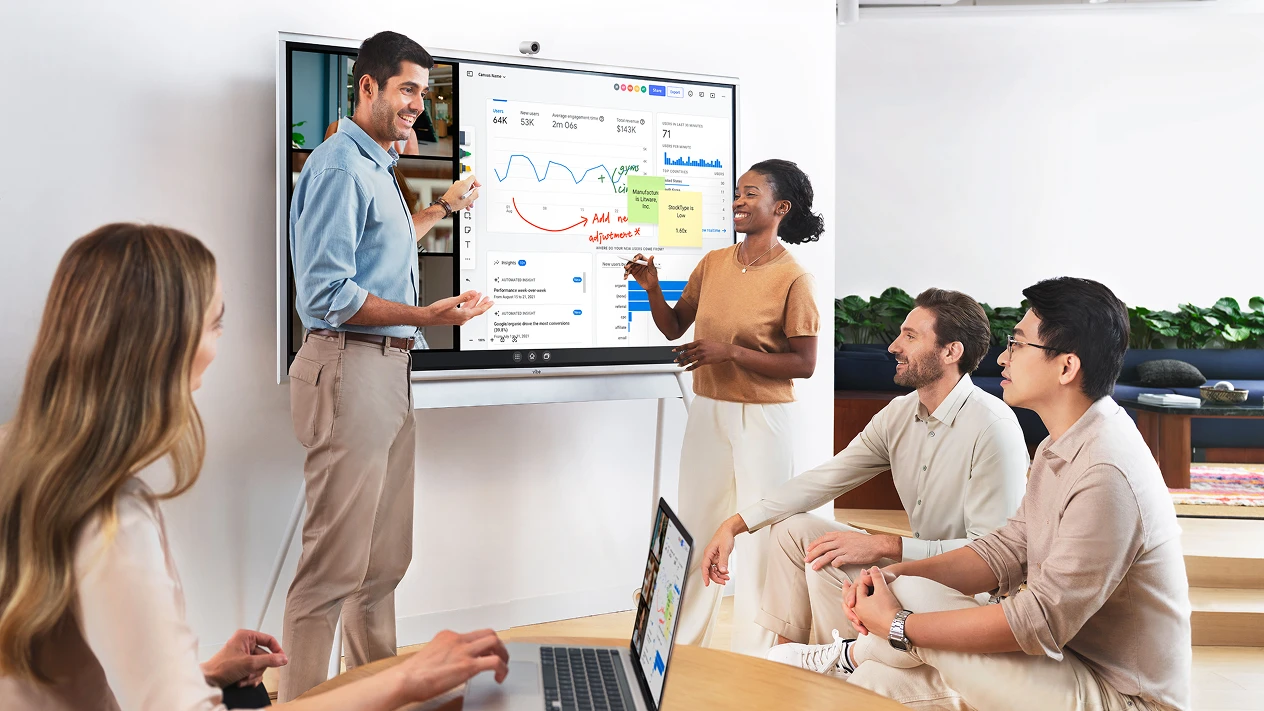 Team using a Vibe Board to collaborate more effectively in a workspace.
Team using a Vibe Board to collaborate more effectively in a workspace.


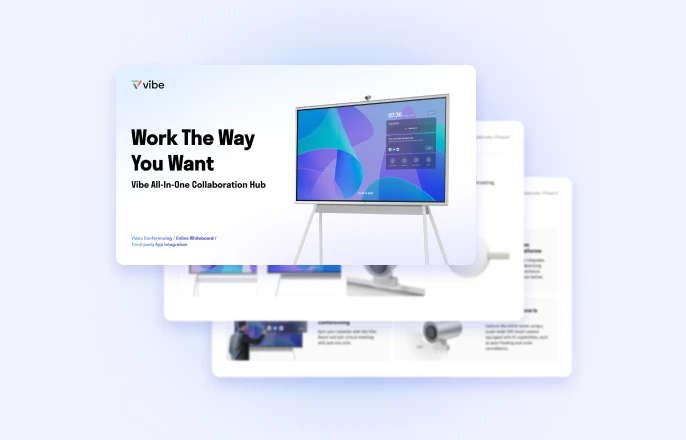
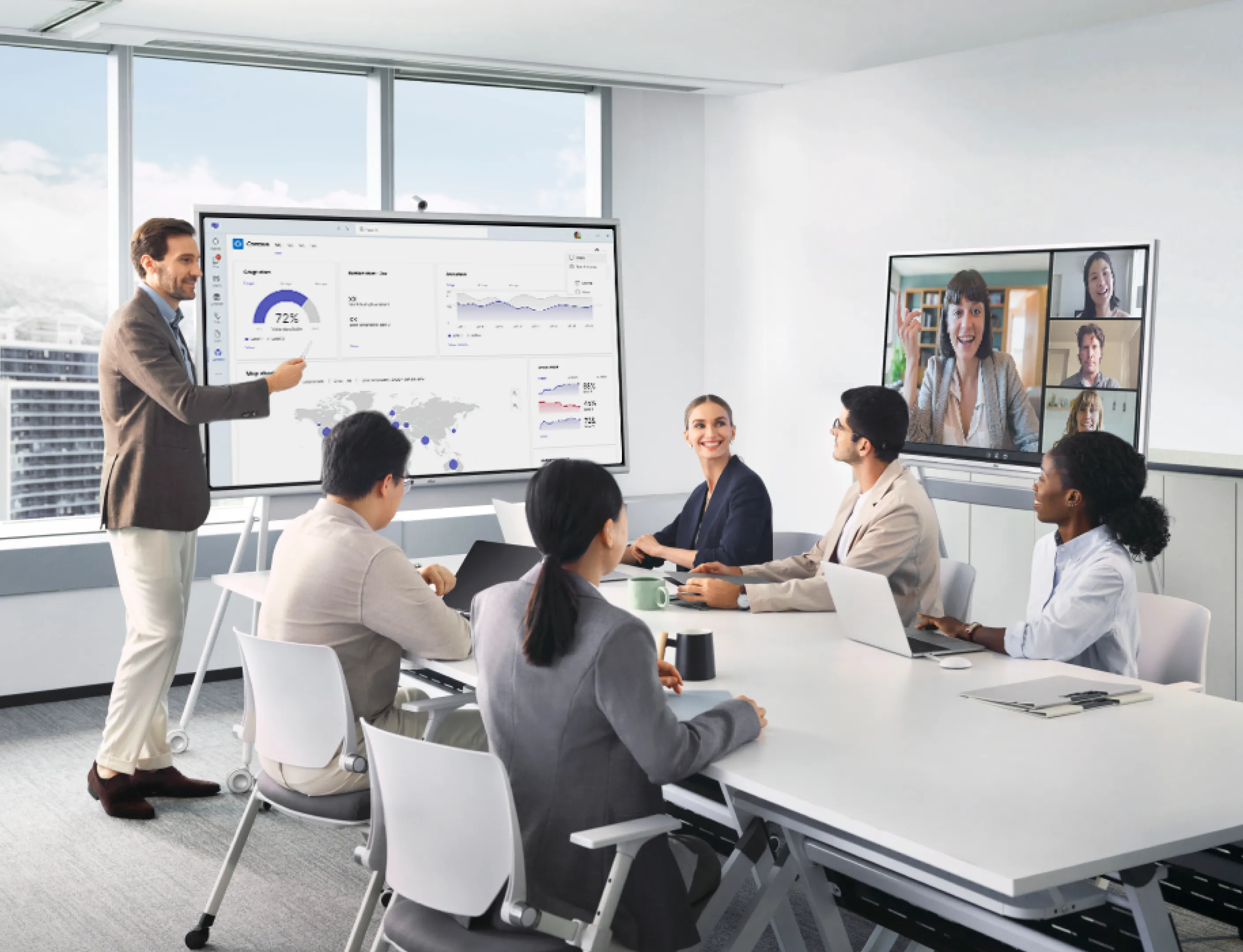
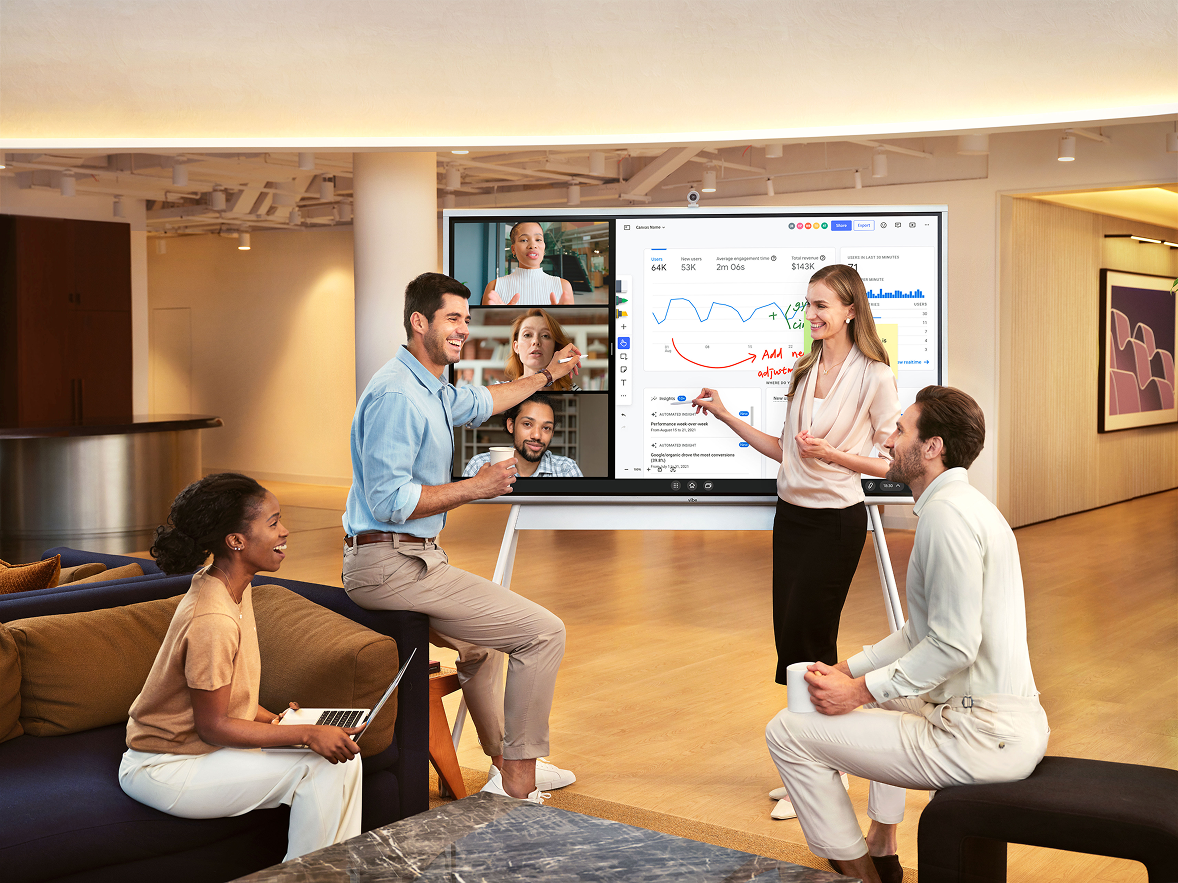

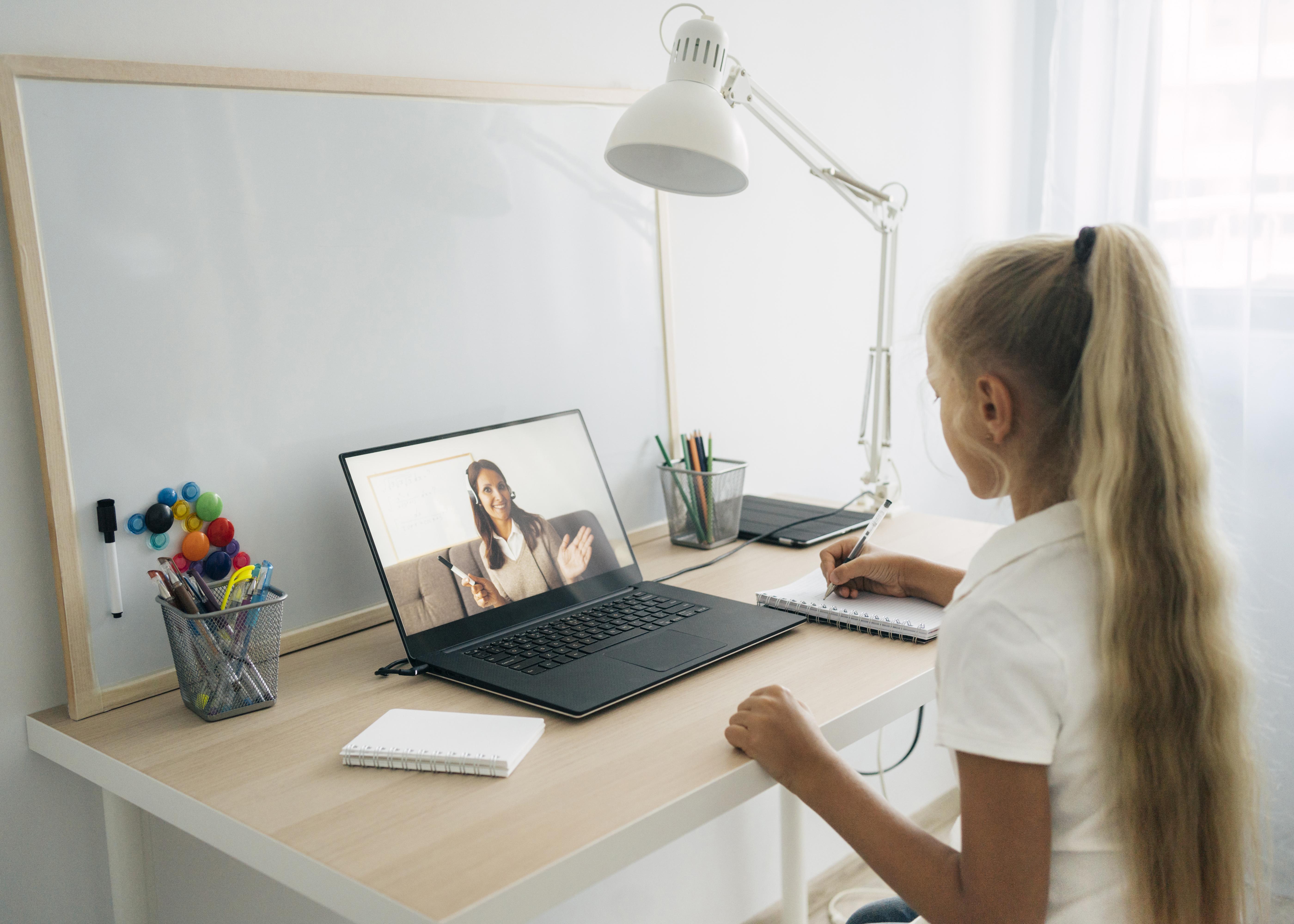

-1sbltxxq4FYxHrXrwJVLsCDNsXpqNa.webp)
-5Zp0pmSytvcuYDVs1LvuwplKuRneK0.webp)
